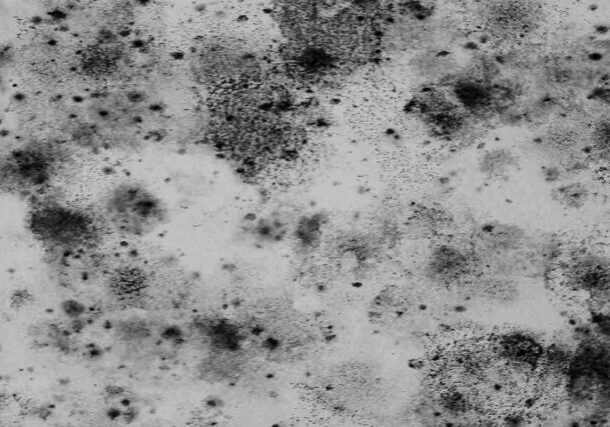The record rainfall and extreme weather in New Jersey this past summer increased the likelihood of dampness and mold in our school buildings. Students at Willingboro High School and the Cecil Collins Elementary School in Barnegat, for example, attended classes in other schools while the mold discovered in their buildings was being removed in September.
Where dampness has been an issue in school buildings, local associations should perform mold walkthroughs and survey staff for health problems using the applicable NJEA checklists. Locals should then bring all problems to district administration and work with their UniServ representative to ensure that the district resolves them.
The Public Employees Occupational Safety and Health (PEOSH) 2007 Indoor Air Quality (IAQ) Standard offers limited mold protection. It requires that school districts promptly repair water leaks and dry, replace, remove, or clean damp or wet materials within 48 hours of discovery and continue remediation procdures until water intrusion is eliminated.
Where districts have not dealt promptly and properly with this summer’s water and dampness, staff and students may now be suffering adverse health effects, especially respiratory effects.
Mold health effects
A 2011 review of the scientific evidence shows indoor dampness or mold to be linked consistently with a wide range of respiratory or allergic health effects, including asthma development and exacerbation, shortness of breath, wheeze, cough, respiratory infections, bronchitis, allergic rhinitis, eczema, and upper respiratory tract symptoms. Links were found in both allergic and nonallergic individuals. These finding were published in Environmental Health Perspectives, a publication of the National Institute of Environmental Health Sciences.
Rainfall and flooding are not the only sources of moisture. Roof, wall, window, and plumbing leaks; seepage through foundations and on-grade concrete slabs; and high humidity also contribute to mold growth.
Molds are found in every season. They can thrive on many indoor surfaces such as wet cellulose materials including paper and paper products, cardboard, ceiling tiles, wood and wood products. Molds also feed on dust, drywall, insulation, paints, wallpaper, fabrics, upholstery, leather, carpeting, carpet backing and padding, foods and other molds. Even the thin layer of dirt on a pane of glass can support some mold growth if moisture is present.
Local association action
For many years mold has been one of the most troublesome IAQ problems facing local associations. A 2-page article in the September 2004 NJEA Reporter explains how mold sampling can be misused to claim there is not a mold problem when one really does exist. This is still a common problem for locals when dealing with mold. See “For more information” for the 2004 article and other useful resources for local associations, including an important new NJEA publication on organizing for better IAQ.
Industrial hygienists with the New Jersey Work Environment Council (WEC) and NJEA field reps, have assisted many local associations in organizing to get school districts to take mold problems seriously. WEC can also help with interpretation of mold sampling and reports. WEC is currently working with locals in Alloway Township, Englewood, Hillsborough Township, and Keansburg on mold problems. Assistance from WEC can be requested through UniServ field representatives.
Money to fix problems
School districts are eligible for aid from the Federal Emergency Management Administration (FEMA) to alleviate suffering and hardship resulting from major disasters or emergencies declared by the President. President Obama declared all of New Jersey a disaster area on August 31 in the aftermath of Hurricane Irene.
In addition, President Obama has asked Congress to invest $30 billion to repair U.S. schools, $25 billion for K-12 schools and $5 billion for community colleges as part of the American Jobs Act of 2011. Local associations should support passage of the Act.
Finally, local associations should support regional flood control efforts through contact with their local elected officials.
Mold health effects
- Individual reactions to mold exposure vary. Reactions range from mild to severe and can occur immediately or be delayed.
- In non-allergic and allergic people molds can cause eye, skin, and upper respiratory irritation.
- Symptoms similar to hay fever, cold or flu are common among allergic people. Headache, cough, chest tightness and lethargy are also reported.
- Molds can trigger or worsen asthma attacks.
- Most at-risk are those with respiratory problems, such as allergies or asthma, children, and the elderly.
- Those with weakened immune systems are also at higher risk. Diabetic or pregnant individuals are moderately immune-compromised. Those who have AIDS or leukemia, are receiving chemotherapy, or are organ transplant recipients are severely immune compromised.
- In rare cases, mold can cause more serious lung disease and systemic illness. Other storm-related health and safety issues Hurricane Irene and Tropical Storm Lee, the media reported flooding in Cranford, Fairfield, Little Falls, Manville, Passaic Valley, Paterson, Trenton, Woodland Park, and other communities. This not only increased the potential for moisture and mold but also for:
- Physical damage to buildings and grounds
- Contamination of buildings, grounds, ventilation systems, and well-water supplies with sewage, bacteria, viruses, and hazardous chemicals
- Disturbance of lead-based paint and asbestos-containing materials in buildings.
- Disturbance of underground storage tanks
- Increase in problems with rodents, snakes, and insects
For more information
- Remediation in Schools and Commercial Buildings, US EPA, 2001 www.epa.gov/mold/mold_remediation.html
- N.J. Office of Emergency Response www.state.nj.us/njoem/index.html N.J. Dept of Health Flood Recovery Page www.nj.gov/health/er/natural.shtml
- N.J. Dept. of Environmental Protection Hurricane Irene Resource Page www.nj.gov/dep/special/hurricane-irene
- PEOSH Indoor Air Quality Page www.state.nj.us/health/peosh/iaq.shtml OSHA Floods Page www.osha.gov/dts/weather/flood/index.html
- NIOSH Floods Page www.cdc.gov/niosh/topics/emres/flood.html
- NIOSH Interim Recommendations for the Cleaning and Remediation of Flood-Contaminated HVAC Systems: A Guide for Building Owners and Managers, 2010 www.cdc.gov/niosh/topics/emres/Cleaning-Flood-HVAC.html
- Mold Prevention Strategies and Possible Health Effects in the Aftermath of Hurricanes and Major Floods, 2006 www.cdc.gov/mmwr/preview/mmwrhtml/rr5508a1.htm
